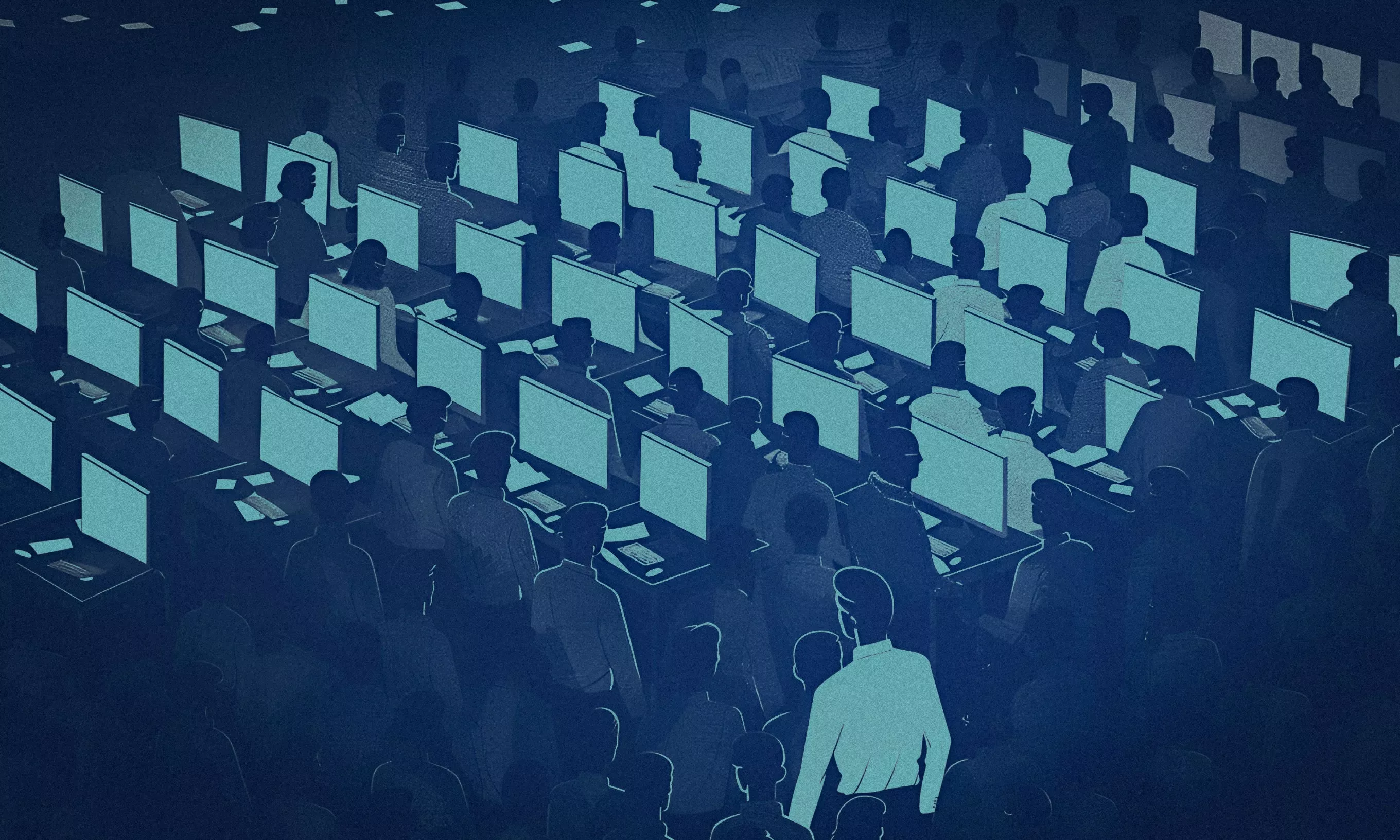If you’re looking for a digital product development agency for your next project, size is probably not the first factor you’re considering. Still, it can be an important one, and we’ll tell you why.
When choosing a digital product development agency, many factors come into play for the client. It could be past experience, location, specialization, price, or availability – to name just a few.
While agency size is not likely to be the first evaluation criterion, we’ve found that many of the factors that typically “make the list” can be affected by it.
In this piece, we’ll examine the interplay between agency size and other factors influencing the choice of a digital partner and outline why we think the medium-size agency is the best fit for most types of engagement. And yes, Infinum is indeed a medium-size agency, but before you accuse us of bias, let us explain.
Defining agency size
There is no industry-standard definition for digital product development agency size, but there are some general conventions and rules of thumb in the agency world. For the purposes of this article, we will take these factors into account and define the framework as follows:
- Boutique-style: a few principals up to 50 employees
- Small: 50-200
- Medium: 201-1000
- Large: 1,001-5,000
- Extra-Large: >5,000
The limitations of boutique and small digital product development agencies
There’s a lot to like about small agencies, and we say this as a former small agency ourselves. From an accountability perspective, many clients will be able to have a personal relationship with a small agency’s CEO or founders, which can be a comforting thought should an escalation be needed.
And if you’re a relatively large client using significant agency resources, you can often be assured of getting the “A Team” since you are not competing against numerous other Fortune 100 clients for agency talent. Simply put, you’ll be able to soak up more limelight than you could at a big agency, just owing to the relative size of your footprint.
However, it does not take long to come up against the limitations of small shops.
Purely as a function of size, small agencies do not have all the skill sets needed for a full product lifecycle project. They can also have difficulty supporting changing or growing project scopes.
It’s basic math that when there are 25 people in a shop, there won’t be a deep bench of strategy, design, development, data science, AI/ML, content, QA, and platform expertise. And we didn’t even get into SEO/SEM, video and audio production, and other marketing functions.
For example, the eight specializations above yield fewer than three practitioners per discipline in a shop of 25 if you include back office roles. Unless you are the only client, there’s just not enough talent to go around. Often, partnerships are leveraged to fill in the blanks, but these can be hit-or-miss since outside companies have their own priorities and cultures to maintain.
Furthermore, small agencies don’t have the ability to scale if your project grows quickly or the scope increases on a dime. It’s not uncommon for stakeholders to want to grow a digital project once they see positive results, and it can be frustrating when there’s a desire to add on specific features or capabilities only to be told, “Sorry, but we can’t offer that” or “We hope to be able to offer that in future.”
Pitfalls of large or extra-large digital product development agencies
There’s also much to love about larger agencies. With a deep bench across specialties, it’s easy to find a partner that can cover the entire product lifecycle and scale up when needed.
With depth also comes experience: there are likely people on the team who’ve dealt with clients like you and problems like the ones you’re facing. That’s a comfort and can lead to some process efficiency attributable to expertise.
However, maintaining a large pool of talent requires infrastructure and ongoing investment. There are exceptions, but bigger companies often end up with relatively more overhead – more layers of management needed to handle the staff size, additional compliance requirements, or more complex technical systems, to name a few. The weight of such an obligation can be costly, and those costs may spill over into the agency’s rates.
In addition, because large agencies often attract bigger clients, as noted above, there can be heavy competition for accounts within the agency. If you end up on the wrong side of this equation, it can mean losing the “A Team” that may have attracted you to the agency in the first place.
Owing to their size, larger agencies can also be stymied by bureaucracy and red tape that can make their process frustrating not only for their staff but clients as well. When processes are slower, digital products can take longer to get to market.
Lastly, it’s worth noting that some large agencies describe themselves as a network of smaller shops. But these smaller shops often come with the same overhead as their parent company, which still means a higher price for you.
The talent question – issues for big and small shops
Talent is a hot commodity. In the current tech landscape, supply is outstripping demand, and it’s not easy to find and retain top-tier technical specialists who understand the ever-changing complexities of the digital space.
In a recent MIT Technology Review Insights poll, 64% of global tech leaders said candidates for their IT and tech jobs lack the necessary skills or experience. It’s certainly not a hard-and-fast rule, but small agencies sometimes do not offer the breadth of opportunity or range of clients to attract top talent.
And since large agencies typically offer a wide range of capabilities to meet the needs of their variety of clientele, they can sometimes adopt a more general approach to their work. Top talent may be less attracted to the generalist nature of this work, preferring to be part of an agency that’s geared to a challenging or exciting subject matter that is their specialty. Additionally, talent in large agencies can also feel lost in the bureaucratic shuffle.
Mid-size agencies can offer the best of both worlds
Middle ground is sometimes the playing field of the indecisive, but when it comes to choosing a digital agency, we dare say mid-size is a great choice for many projects.
Full disclosure, at 370 people, Infinum is a mid-size agency. Not surprisingly, we feel there are some significant benefits to an agency of our size. But it’s not necessary to take just our word for it.
According to a recent Forrester Wave™: Midsize Digital Experience Agencies, mid-sized agencies offer many benefits. Customer respondents described them as “an extension to my team,” “big enough to do complex projects,” “more agile than the ‘big guys,’” and “a great cultural fit.”
James Cole, CEO of Infinum North America, explains his perspective as someone who led a 25-person shop before being acquired by Infinum in late 2023:
“Evolving from a 25-person firm to one nearing 400 employees was a bit of an adjustment. We were quite capable as a smaller firm, but now we have a much wider and deeper toolkit that we can leverage to benefit our clients.”
The key is to not lose the nimbleness and culture of a smaller firm while maximizing the capabilities of a large collective. We like to say, “We’re big enough to deliver, small enough to care.” It’s the best of both worlds.
JAMES COLE, CEO, NORTH AMERICA
In summary, here are some of the reasons we think medium-size agencies are an exceptional choice.
- Competitive pricing compared to their larger counterparts due to lower overhead. You won’t be paying the costs associated with maintaining an expansive resource pool or some of the costly perks employees expect from big companies.
- Access to an exceptional talent pool because they are big enough to offer interesting projects and small enough to lack red tape.
- Direct access to a wide range of experienced professionals with quick response times relative to their more bureaucratic large brethren – or smaller agencies that don’t have as many experts on call.
- Cultural fit is subjective, but as the Forrester report points out, it can sometimes be difficult for large agencies with strong cultures to adapt to those of their clients.
In the end, it’s a choice every client must make
When looking for a digital agency, only you can know what is best for you. When it comes to agency size, we’d encourage you to think about the factors we’ve noted above and how much they matter to you.
How important is the speed of response? Do you have tolerance for lesser efficiency to gain breadth under one roof? Does the small agency you like have depth in the skills you need today – and tomorrow? How important is it that your agency mesh with your culture?
If you’re making this important decision, we’re happy to be your counsel, whether you’re currently thinking boutique, small, medium, large, or extra-large. Feel free to reach out.
Karri Offstein Rosenthal is a digital strategist, writer, and podcast host-producer whose latest series, “Held,” was a Top 25 Apple documentary podcast. Her play, “Broken Water,” was presented as part of the Lab@Piven and The Oil Lamp Theater Play Reading Series in the Chicago area. She was Director of Online Selling for the Scholastic Education Group and a marketer for startups and established firms in the education and beauty industries.











